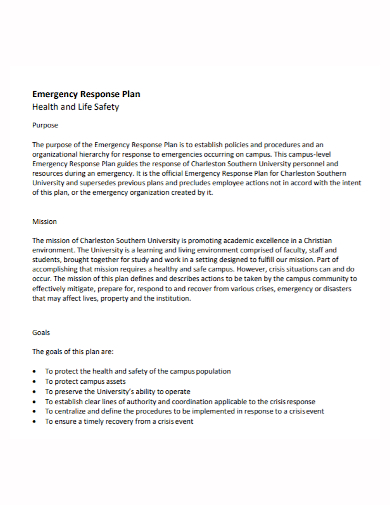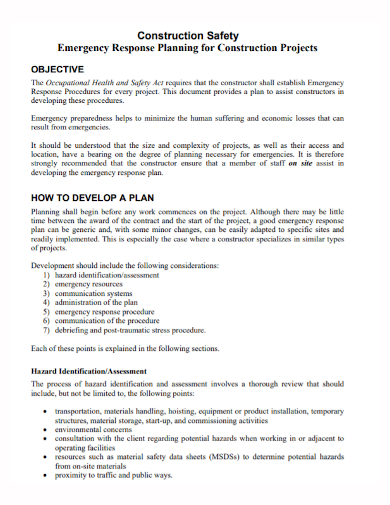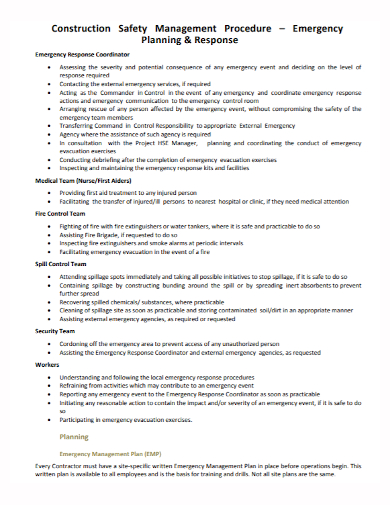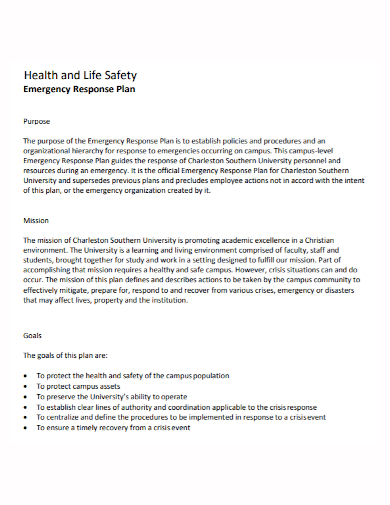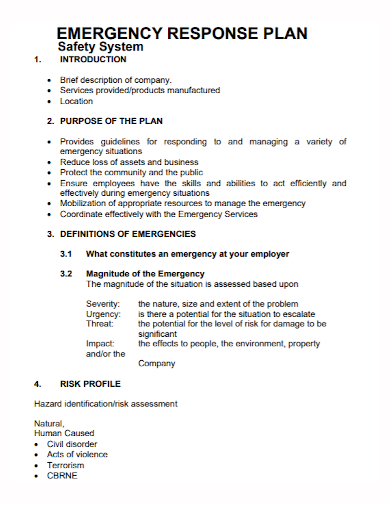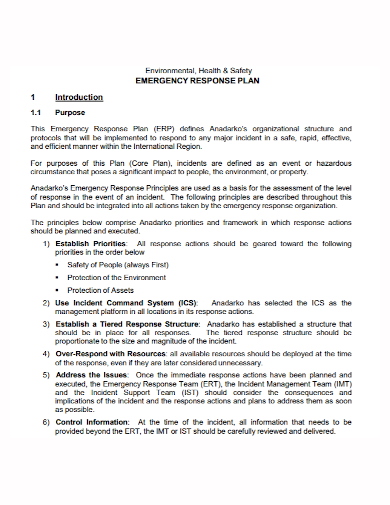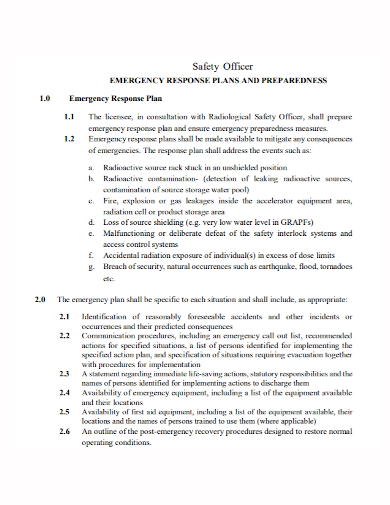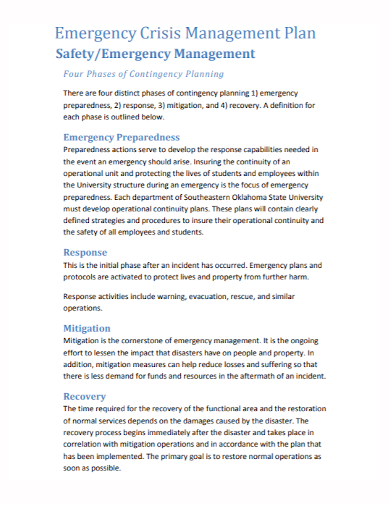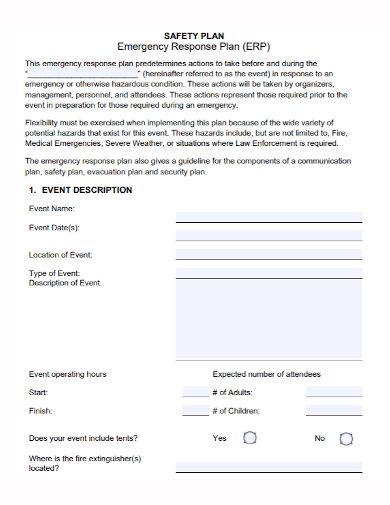Incidents, accidents, and natural disasters have become a part of our everyday lives. For as long as we all can remember safety has become a priority of every family, community, business establishment, learning institution, everyone in general. That being said, it has become increasingly important that several initiatives and measures are taken into consideration to lessen any serious damage or cost of life. One very important undertaking is to develop a safety emergency response plan which will highlight every action and preventive measure taken during the course of an emergency. With the right planning, these actions taken by any individual with the proper knowledge of building and process systems will help control and minimize damage to oneself and the surrounding areas. To learn more continue reading our article below and if you wish to get started with your emergency response plan, go ahead and download our free safety emergency response plan made available on this page.
10+ Safety Emergency Response Plan Samples
1. Safety Emergency Response Plan Template
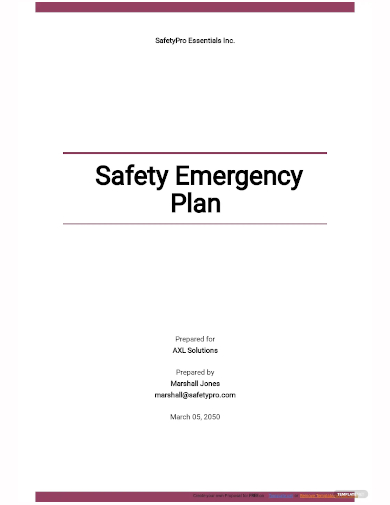
2. Emergency Safety Response Plan
3. Construction Safety Emergency Response Plan
4. Construction Health Safety Emergency Response Plan
5. Health and Safety Emergency Response Plan
6. Safety System Emergency Response Plan
7. Environmental Safety Emergency Response Plan
8. Safety Emergency Response Preparedness Plan
9. Safety Management Emergency Response Plan
10. Site Safety Emergency Response Plan
11. Safety Event Emergency Response Plan
What Is a Safety Emergency Response Plan?
In most cases, we cannot tell whenever an emergency would occur. It always happens when we all least expect it, prompting shock and chaos. A lot of people would advise to stay calm and collected in an event of an emergency, but unfortunately, that may not always be the case. Depending on the gravity of each incident, people have different ways of responding. This is why a safety emergency response plan is an important approach to educate individuals may these be employees, leaders, or any private citizens on what to do in an event of an emergency. Such a plan will not only save lives but help businesses or leaders of a community take proper steps on how to help improve the safety of a facility and the environment.
How To Develop a Safety Emergency Response Plan?
In an event of an emergency, the first priority is to protect people’s lives, second is to ensure that the surroundings are safe and stabilized. In some cases when a natural disaster has been forecasted, there should be initial actions taken to help protect the surrounding areas and people. Such a plan would entail evacuation and securing the property. Remember, an emergency is not only limited to any natural disasters, this can be man-made or simply an accident. You must be able to consider all possibilities when developing a safety emergency response plan. Even incidents that you would least expect to happen. Here are several tips that can help you develop an effective safety emergency response plan which can safeguard the best interest of employees, private citizens, and your property.
1. Risk Assessment
Before you can fully develop your safety emergency response plan, you need to identify the various risk your property or the surrounding areas may pose. An understanding of what can happen will enable you to determine what particular resource requirement is needed and this will help you develop specific action plans and procedures to protect your facility, employees, customers, and private citizens.
2. Emergency Resources
After identifying the risk, it is time to create several means that would help lessen these risks. Perhaps you notice that your facility is located in a coastal area, and the city is known to have frequent typhoons or earthquakes. So aside from creating a sturdy structure, you may need to develop an evacuation plan whenever a storm surge or tsunami occurs. So, assess what are the different resources that are available to help stabilize the emergency. Aside from that, you may need to create a list of public emergency services as well.
3. Emergency Response Team
In an event of any emergency, there must be a dedicated team of individuals who would be able to make the right decisions without hesitation. We cannot prevent chaos and panic since this may likely happen in an emergency, so assigning personnel the responsibilities of controlling access to the emergency scene and redirecting people to safety is a priority and would bring out peace of mind.
4. Emergency Communication and Notifications
A safety emergency response plan should include guidelines on how to communicate, notify the appropriate authorities and personnel and send out warnings of the emergency. You will need to develop several safety protocols and procedures that will ensure that the proper line of communication during and after an emergency.
5. Safety and Emergency Training Exercises
It is important not for only businesses, but for schools, and other important institutions to engage in safety and emergency training exercises. Conduct several emergency exercises such as fire drills, evacuation, and lockdown drills. Familiarize staff with the different emergency alarms, and protocols or lifesaving steps such as First Aid or CPR so they are able to remain calm and collected during an emergency.
6. Monitor Your Emergency Response Plan
As mentioned, it’s hard to avoid emergencies as they are prone to happen one way or another. Once they do, make sure to assess and evaluate the actions taken during the incident. Make sure to check if everything had gone according to plan or were there any mishaps along the way. In this way, you and your team are able to find alternatives and make all the necessary amendments.
FAQs
What Are the Common Emergency Hazards?
These are hazards caused by natural or environmental elements such as geological, meteorological, and biological hazards. Then there are man-made incidents and technology-caused events.
Why Is an Emergency Response Plan Important?
It is important because it promotes safety awareness and shows the organization’s commitment to the safety of workers.
What Is a Risk Assessment?
Risk Assessment is the method of identifying potential risks in advance, analyzing them, and taking precautionary steps to reduce/curb the risk.
It is difficult to avoid accidents or incidents of any sort, so the best way to lessen the effects of any damages is to develop a safety emergency response plan that can help business establishments and communities prepare for the worst.
Related Posts
FREE 12+ Sample School Action Plan
FREE 10+ Sample Personal Action Plan
FREE 10+ Sample Incident Action Plan
FREE 10+ Construction Health And Safety Plan Samples
FREE 10+ Project Health and Safety Plan Samples
FREE 10+ Construction Safety Management Plan Samples
FREE 10+ Safety Audit Checklist Samples
FREE 9+ Sample Emergency Response Plan
FREE 9+ Hotel Action Plan Samples
FREE 8+ Sample Emergency Action Plan
FREE 35+ Sample Action Plan
FREE 13+ Crisis Management Plan Samples
FREE 11+ Management Action Plan Samples
FREE 10+ Environmental Action Plan Samples
FREE 10+ Incident Corrective Action Plan Samples

